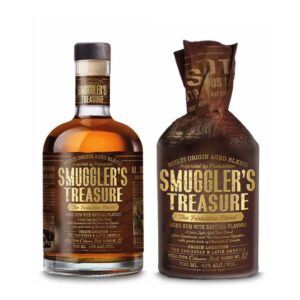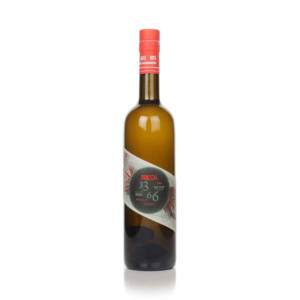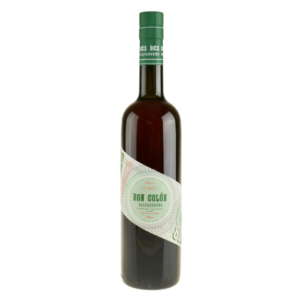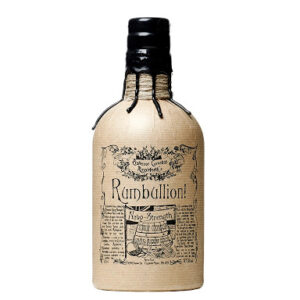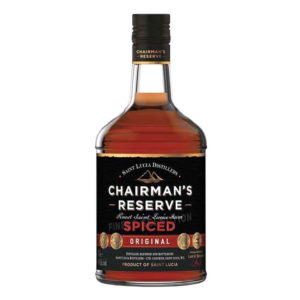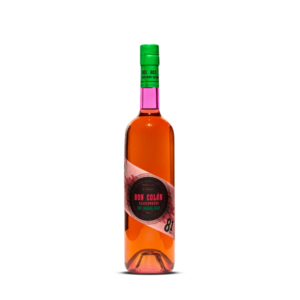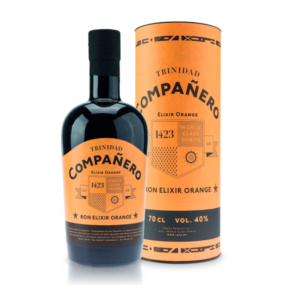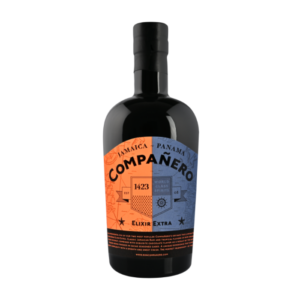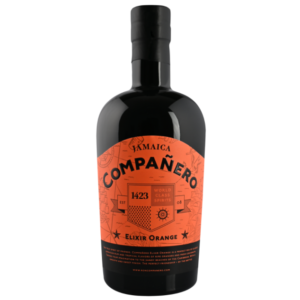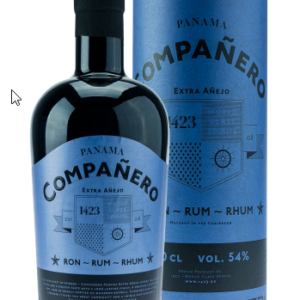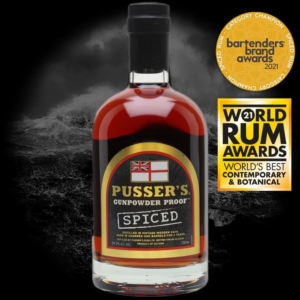Showing all 15 resultsSorted by popularity
Spiced Rum – The Complete Guide
TL;DR: In Brief
- Spiced Rum is characterized by its infusion with spices, herbs, and sometimes fruits for enhanced flavor profiles
- Primarily made from sugarcane derivatives and defined by post-distillation flavoring with various spices
- Found in several styles, including Caribbean-style, Navy-style, and premium craft variations
- Best enjoyed neat, over ice, or in cocktails like the Dark ‘n Stormy or Spiced Rum Punch
Disclaimer: This guide is intended for informational purposes for adults over 18 years of age. Vault of Spirits encourages responsible consumption of alcohol.
Introduction to Spiced Rum
Spiced Rum has a rich history and fascinating craftsmanship behind it. From its origins in the Caribbean to its global popularity today, this spirit has evolved to become one of the world’s most cherished flavored spirits.
This guide provides insight into the production, flavor notes, and enjoyment of spiced rum, whether you’re a beginner or an experienced enthusiast.
With its warming spices and versatile character, spiced rum offers a perfect entry point for those new to rum while providing enough complexity to interest seasoned rum lovers.
How Did Spiced Rum Originate?
From Past to Present
The practice of spicing rum dates back to the 17th century in the Caribbean, where sailors and traders began adding local spices to their rum rations.
Originally, spicing rum served practical purposes – the added spices and herbs masked the harsh flavors of unrefined rum while providing medicinal benefits during long sea voyages.
The Royal British Navy played a significant role in spreading spiced rum throughout colonial territories, where it became integrated into local drinking cultures.
Which Historical Milestones Shaped Spiced Rum?
The 1700s saw spiced rum develop as sailors created “bumbo” – a mixture of rum, sugar, water, and nutmeg or cinnamon that became popular throughout the Caribbean.
The 1984 launch of Captain Morgan Original Spiced Rum marked a turning point, transforming spiced rum from a niche product into a mainstream spirit category.
The craft spirits movement of the early 2000s brought renewed interest in premium spiced rums, with artisanal producers experimenting with unique spice blends and high-quality base rums.
How Has Spiced Rum Influenced Cultural Traditions?
In the Caribbean, spiced rum became central to celebratory occasions and religious ceremonies, often incorporated into traditional punches and communal drinks.
The tradition of “rum cake” during Christmas, particularly in Jamaica and the Bahamas, showcases how spiced rum became embedded in cultural food practices.
In coastal regions worldwide, spiced rum developed into a symbol of maritime culture, featuring prominently in sea shanties, naval traditions, and contemporary pirate mythology.
Why Is Spiced Rum Popular Today?
Spiced rum’s approachable flavor profile makes it perfect for those new to spirits, offering familiar notes of vanilla, cinnamon, and caramel.
Its versatility in cocktails has made it a bartender favorite, capable of adding complexity to simple mixed drinks without overwhelming other ingredients.
The rise of premium spiced rums has attracted connoisseurs looking for thoughtfully crafted spirits with unique spice blends and quality base rums.
How Is Spiced Rum Made?
Which Raw Materials Are Used in Production?
Spiced rum begins with a base rum, typically made from sugarcane derivatives like molasses or sugarcane juice, which provides the foundation for the spirit.
Primary ingredients:
- Molasses – The most common base for rum production, providing rich, deep flavors that complement spices
- Sugarcane juice – Used in some premium spiced rums for a cleaner, more agricultural profile
- Spices and botanicals – The defining elements that may include cinnamon, vanilla, cloves, nutmeg, star anise, ginger, citrus peel, and other flavorings
How Does the Fermentation Process Work?
Fermentation begins with the addition of yeast to diluted molasses or sugarcane juice, converting sugars to alcohol over a period typically ranging from 24 hours to several days.
Both commercial and proprietary yeast strains are used, with some producers maintaining unique yeast cultures that contribute signature flavor characteristics.
The fermentation environment substantially influences the final flavor profile, with temperature, duration, and bacteria present all affecting the range of congeners produced.
Which Distillation Techniques Are Used?
The base rum for spiced varieties is distilled using various methods before the spicing process begins.
Common distillation methods:
- Pot still distillation – Creates fuller-bodied rums with more congeners, providing a robust base for spices
- Column still distillation – Produces lighter, cleaner rums that allow spice flavors to shine more prominently
- Hybrid approaches – Many producers use both methods to create balanced base rums with ideal characteristics
What Is the Significance of Aging?
While some spiced rums use unaged white rum as their base, many premium versions start with rum that has been aged for several years.
Oak barrel aging contributes vanilla, caramel, and woody notes that complement the added spices and provide depth.
The spicing process typically occurs after aging, though some producers experiment with aging the rum with spices in the barrel for more integrated flavors.
After spicing, many products undergo a final resting period to allow flavors to marry before bottling.
Which Regions Are Known for Spiced Rum?
Where Are the Best Varieties Produced?
The Caribbean remains the spiritual home of spiced rum, with Jamaica, Barbados, and Puerto Rico producing distinctive styles with regional spice influences.
The United States has become a significant producer of craft spiced rums, particularly in areas like Louisiana, Florida, and California, often incorporating local botanicals.
Central and South American countries like Guatemala, Venezuela, and Nicaragua are creating premium spiced rums with unique flavor profiles influenced by local spice traditions.
How Do Geography and Climate Affect the Flavor?
Tropical climates accelerate the aging process, allowing spiced rums from the Caribbean to develop mature characteristics more quickly than those aged in cooler regions.
Regional availability of spices influences traditional recipes – island producers often incorporate native citruses, while mainland producers might use local herbs and roots.
Water sources used in production contribute mineral content that can affect fermentation and the final flavor profile of the base rum.
What New Trends Are Seen in Spiced Rum Production?
Craft producers are experimenting with unusual spice combinations beyond the traditional vanilla and cinnamon profiles, incorporating elements like saffron, cardamom, and pink peppercorn.
Terroir-focused spiced rums are emerging, with producers using botanicals specific to their local environment to create distinctive regional expressions.
Lower-sugar spiced rums are gaining popularity as consumers seek drier, more sophisticated options that highlight spice complexity rather than sweetness.
What Do the Different Quality Designations Mean?
Unlike aged rums, spiced rum lacks a unified global classification system, with few regulations governing production methods or ingredients.
“Premium” or “craft” spiced rums generally indicate higher-quality base spirits, natural spices (versus artificial flavors), and more careful production methods.
Some producers include age statements referring to the base rum used, though this practice isn’t standardized across the industry.
How Does Spiced Rum Taste?
What Characterizes the Typical Flavor Profile?
Spiced rum typically features a warm, aromatic character with sweetness balanced by spice complexity and subtle rum undertones.
Typical aromas:
- Sweet notes – Vanilla, caramel, brown sugar, honey, maple
- Spice elements – Cinnamon, nutmeg, allspice, clove, star anise, black pepper
- Complementary notes – Orange peel, coconut, dried fruits, chocolate, coffee
How Does the Flavor Vary Between Different Styles?
Caribbean-style spiced rums often feature tropical fruit notes alongside traditional spices, with a generally fuller body and rich molasses character.
American craft spiced rums frequently showcase experimental spice combinations and sometimes incorporate bourbon-inspired notes like charred oak and smoke.
Navy-style spiced rums tend to be higher proof with bold spice profiles dominated by cinnamon, nutmeg, and black pepper for a more assertive character.
How Does the Flavor Develop with Age?
Spiced rums based on older aged rums develop more complexity, with the oak-derived notes intertwining with the added spices for a more integrated profile.
Over time, even bottled spiced rum can evolve as the flavors marry, with sharper spice notes mellowing and blending with the base rum character.
Limited edition vintage releases of spiced rum can showcase how specific spice blends interact with the base rum over extended aging periods.
What Signs Reveal High Quality?
High-quality spiced rum should display balance between sweetness, spice, and the character of the base rum, with no single element dominating.
The presence of genuine, identifiable spice notes rather than a generic “spiced” flavor indicates natural ingredients rather than artificial flavoring.
A smooth texture without harsh alcohol burn, even at higher proofs, demonstrates careful distillation and quality production methods.
How Is Spiced Rum Best Enjoyed?
What Is the Optimal Serving Method?
Quality spiced rums can be enjoyed neat at room temperature to fully appreciate their complex flavors and aromas.
Serving over a single large ice cube offers gentle dilution that can open up the flavor profile while providing refreshing coolness.
Simple mixers like ginger beer, cola, or apple cider complement spiced rum without overwhelming its character.
Which Glass and Temperature Are Ideal?
A tulip-shaped glass or snifter helps concentrate aromas when enjoying spiced rum neat or with minimal ice.
For mixed drinks, a highball or collins glass provides space for ice and mixers while maintaining aromatics.
Ideal serving temperature is slightly below room temperature (around 60-65°F/15-18°C) for neat pours, allowing the full range of flavors to emerge without alcohol dominating.
How Do You Taste Like an Expert?
Begin by examining the color, which can range from golden to deep amber depending on the age of the base rum and added colorings.
Nose the rum gently to identify the spice components, looking for layered aromas rather than a single dominant note.
When tasting, note how the flavor evolves from the initial sweetness through the mid-palate spice complexity to the finish, assessing balance and integration.
Which Dishes Complement Spiced Rum?
Desserts featuring similar spice profiles, such as apple pie, pumpkin dishes, and cinnamon rolls, create pleasing flavor echoes when paired with spiced rum.
Chocolate desserts, particularly those with dark chocolate, complement the sweetness while standing up to the spice intensity.
Savory dishes with sweet elements like glazed ham, jerk chicken, or barbecued meats provide interesting counterpoints to spiced rum’s flavor profile.
Which Cocktails Can Be Made with Spiced Rum?
Which Classic Cocktails Should You Know?
Dark ‘n Stormy
- Ingredients: 2 oz spiced rum, 4 oz ginger beer, lime wedge
- Preparation: Build over ice in a highball glass, garnish with lime
- History: Originally made with Gosling’s Black Seal Rum, this adaptation uses spiced rum for added complexity
Spiced Rum Punch
- Ingredients: 2 oz spiced rum, 1 oz fresh lime juice, 1 oz pineapple juice, 0.5 oz orange juice, 0.5 oz simple syrup
- Preparation: Shake with ice, strain into an ice-filled glass, garnish with nutmeg and pineapple
- History: Derives from traditional Caribbean punch recipes that have evolved over centuries
Which Modern Cocktails Are Worth Trying?
Spiced Rum Old Fashioned
- Ingredients: 2 oz premium spiced rum, 0.25 oz demerara syrup, 2 dashes Angostura bitters, orange peel
- Preparation: Stir with ice, strain over large ice cube, garnish with expressed orange peel
Cinnamon Apple Spice
- Ingredients: 1.5 oz spiced rum, 3 oz apple cider, 0.5 oz lemon juice, dash of cinnamon
- Preparation: Warm ingredients together (not boiling), serve in a mug with a cinnamon stick garnish
How Is Spiced Rum Enjoyed Neat?
Premium spiced rums shine when served in a proper spirits glass at slightly below room temperature, allowing aromatics to develop fully.
A common simple serve is “on the rocks” with a single large ice cube, which provides gentle dilution while maintaining flavor intensity.
The “Spiced and Splice” – spiced rum with a splash of soda water and slice of orange – offers a refreshing, low-intervention way to enjoy quality spiced rum.
Which Homemade Variations Can You Experiment With?
Creating your own spiced rum at home by infusing white or aged rum with fresh spices allows for personalized flavor profiles.
Common DIY spiced rum ingredients include split vanilla beans, cinnamon sticks, star anise, allspice berries, and orange peel, infused for 1-2 weeks.
Seasonal infusions like cranberry-spiced rum for winter or mango-chile spiced rum for summer offer creative variations on the traditional recipe.
What Should You Know Before Buying Spiced Rum?
Which Details Should You Pay Attention to When Buying?
Look for transparency about the base rum – quality spiced rums often mention the origin, age, or production method of the underlying spirit.
Check ingredient statements for natural spices versus “natural flavors” or artificial additives, which can indicate production quality.
Alcohol content matters – higher proof spiced rums (45%+ ABV) often deliver more authentic spice character and less reliance on sweeteners.
What Do You Get for Your Money in Different Price Ranges?
Entry-level spiced rums ($15-25) typically feature sweeter profiles with prominent vanilla and caramel, suitable for mixing with cola or in punch.
Mid-range options ($25-40) offer more balanced spice profiles, less sweetness, and higher quality base rums that can be enjoyed neat or in crafted cocktails.
Premium spiced rums ($40+) provide complex spice arrangements, quality aged base spirits, and sophisticated flavor profiles that reward careful sipping.
How Is Spiced Rum Properly Stored?
Store spiced rum bottles upright in a cool, dark place away from direct sunlight, which can degrade both the flavors and color.
Unlike wine, spiced rum doesn’t continue to age in the bottle, but exposure to air after opening can gradually impact flavor over time.
For optimal flavor preservation, consume opened bottles within 1-2 years and consider transferring to smaller bottles as the level decreases to minimize oxidation.
Is Spiced Rum a Good Investment?
Unlike aged rums or limited-edition releases, standard spiced rums rarely appreciate significantly in value as collectibles.
Some limited production craft spiced rums from renowned distilleries may gain modest value if discontinued or highly rated.
The best “investment” in spiced rum is finding bottles you personally enjoy rather than seeking financial returns.
Which Brands Do We Recommend?
What’s Best for Beginners?
Captain Morgan Original Spiced Rum offers a widely available introduction to the category with approachable vanilla and cinnamon notes.
Sailor Jerry Spiced Rum provides a slightly higher proof option with prominent cherry and vanilla character that works well in simple mixed drinks.
Kraken Black Spiced Rum delivers a darker, more molasses-forward profile with stronger spice presence that stands up well in cola or ginger beer.
What Will Impress Enthusiasts?
Chairman’s Reserve Spiced Rum from St. Lucia combines quality aged rum with native spices and fruits for a sophisticated, less sweet expression.
Foursquare Spiced Rum from Barbados showcases master distiller Richard Seale’s expertise with a drier, more complex approach to the category.
Boukman Botanical Rhum from Haiti offers a unique take on spiced rum using indigenous herbs and spices with a traditional clairin-style base.
Which Bottles Are Most Sought After?
Plantation’s limited edition Stiggins’ Fancy Pineapple Rum, while technically a fruit-infused rather than spiced rum, has become highly sought after for its exceptional quality.
Lost Spirits Navy Style Rum incorporates innovative rapid-aging technology with a complex spice profile for a truly unique collector’s item.
Black Tot Finest Caribbean Rum with its special spiced editions has achieved cult status among collectors for its naval rum heritage and limited availability.
Where Do You Get the Most Value for Money?
Plantation Original Dark Overproof offers excellent value with its rich spice character and versatility at a mid-range price point.
Bayou Spiced Rum from Louisiana delivers a distinctive regional character with notes of creole spices at an accessible price.
The Real McCoy 5 Year Spiced Rum provides authentic Barbadian rum quality with a balanced, less-sweet spice profile that outperforms its price category.
Frequently Asked Questions
What Is Spiced Rum?
Spiced rum is a flavored rum that has been infused or blended with spices and sometimes caramel coloring.
It typically features warm spices like cinnamon, vanilla, allspice, and cloves, along with other potential additives like citrus peel or tropical fruits.
While often sweeter than traditional rums, quality spiced rums balance sweetness with genuine spice character and the flavor of the base rum.
How Is Spiced Rum Produced?
Production begins with a base rum that is distilled from fermented sugarcane byproducts like molasses or sugarcane juice.
After distillation and sometimes aging, the rum is infused with spices either through direct addition of spices to the liquid, through vapor infusion, or by using flavor extracts.
The spiced rum is then typically filtered, adjusted for color and sweetness, and bottled, usually at between 35% and 40% ABV.
What Characterizes Spiced Rum?
A balanced sweetness complemented by warming spice notes, most commonly featuring vanilla, cinnamon, and nutmeg.
Amber to dark brown coloration, partially from caramel coloring but also from spice infusion and any barrel aging of the base rum.
Versatility in consumption – suitable for sipping neat, drinking over ice, or mixing in a wide range of cocktails from simple highballs to complex tiki drinks.
Where Can You Buy Spiced Rum?
Spiced rum is widely available at most liquor stores, with major brands found in virtually any shop that sells spirits.
Specialized liquor retailers and online spirits merchants offer access to craft and premium options not found in general retail locations.
Some distilleries sell direct-to-consumer through their websites or tasting rooms, often offering special releases not available through regular distribution.
